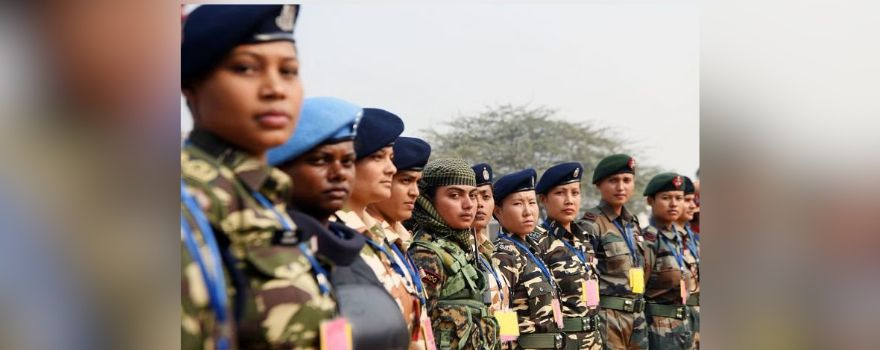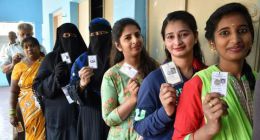Women in CAPFs: From Challenges to 2025 Progress
02 JAN 2025
The Central Armed Police Forces (CAPFs) and Assam Rifles have seen significant efforts to increase the participation of women over the past few years. However, challenges remain as the representation of women continues to be notably low, even as targeted recruitment plans and policy changes aim to address these issues.

PC: The Wire
The Central Armed Police Forces (CAPFs) and Assam Rifles have seen significant efforts to increase the participation of women over the past few years. However, challenges remain as the representation of women continues to be notably low, even as targeted recruitment plans and policy changes aim to address these issues.
The Situation before
In 2022, the Parliamentary Standing Committee on Home Affairs, led by BJP Rajya Sabha member Brijlal, expressed concern over the “abysmally low” strength of women personnel in CAPFs and Assam Rifles. Women accounted for only 3.68% of the total force, despite the government’s decision in 2016 to reserve 33% of constable posts in CRPF and CISF for women, and 14-15% in BSF, SSB, and ITBP.
The committee highlighted several barriers to increasing female representation, including the harsh conditions of border outposts, lack of family-friendly postings, and inadequate support for work-life balance. It recommended phase-wise fast-track recruitment drives, particularly in CRPF and CISF, and called for creating a conducive environment at border outposts with separate facilities for women.
Other key suggestions included posting women closer to their hometowns, providing adequate leave policies to ease stress, and positively considering proposals for additional posts to accommodate these changes.


PC: The Print
The Current Scenario
By 2024, the number of women in CAPFs rose from 15,499 in 2014 to 42,190, according to the Union Ministry of Home Affairs (MHA). Yet, this accounts for only about 4% of the total strength of the CAPFs. The Central Industrial Security Force (CISF) leads with over 7% representation, while the Central Reserve Police Force (CRPF) lags at 3.38%.
To address these persistent challenges, the government has announced a plan to recruit 4,138 women personnel in CAPFs and Assam Rifles by 2025. Of these, the Border Security Force (BSF) will recruit 2,419 women, followed by CISF (818), Indo-Tibetan Border Police (ITBP) (456), CRPF (242), Sashastra Seema Bal (SSB) (103), and Assam Rifles (100).
The CRPF recently conducted a special study to understand the physical and mental well-being of its female personnel. Surveys collected responses from women posted in remote and metropolitan areas, covering topics such as work-life balance, family time, and professional challenges. The findings aim to guide the force in assigning more diverse roles to women, including deployment in operational areas.
Additionally, new Standard Operating Procedures (SOPs) have been introduced to address mental health concerns. Unit commanders are now required to maintain detailed records of personnel's personal issues and conduct regular interviews to identify stressors.
The government’s phased approach to recruiting more women into CAPFs and creating a supportive environment signals a commitment to gender inclusion in the armed forces. However, to truly enhance women’s participation, efforts must extend beyond numbers to address systemic challenges, including better work conditions, flexible policies, and mental health support.
As recruitment drives gain momentum, the coming years will test whether these measures translate into meaningful change, fostering a more inclusive and equitable environment for women in India’s paramilitary forces.
1733304849.jpg)
1732873755.jpg)



















